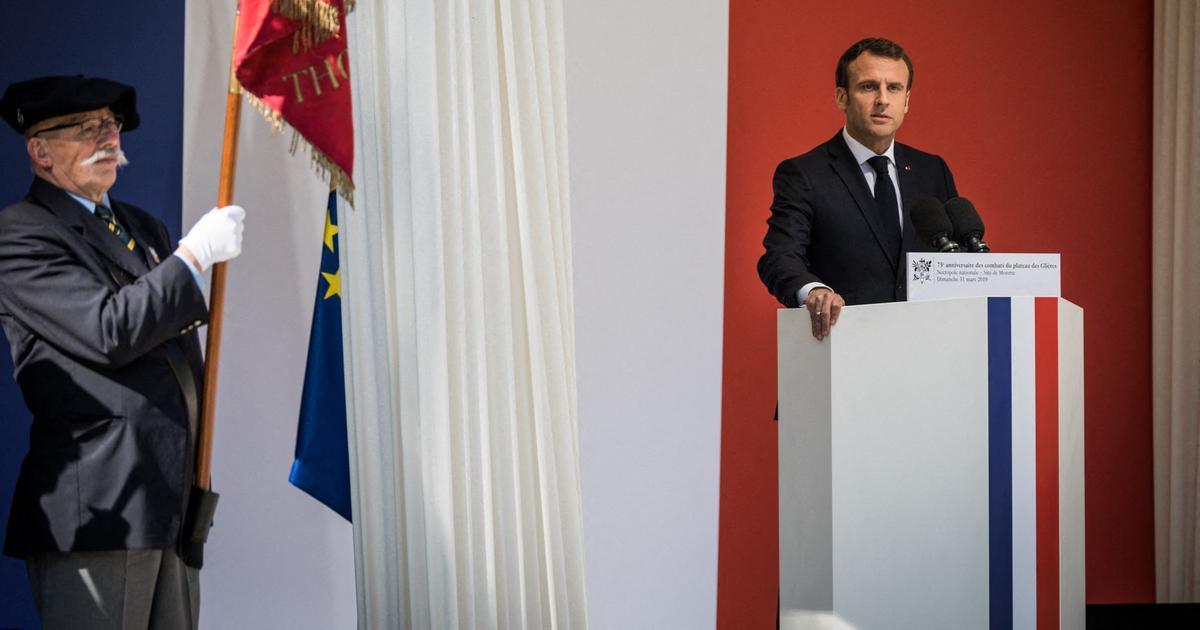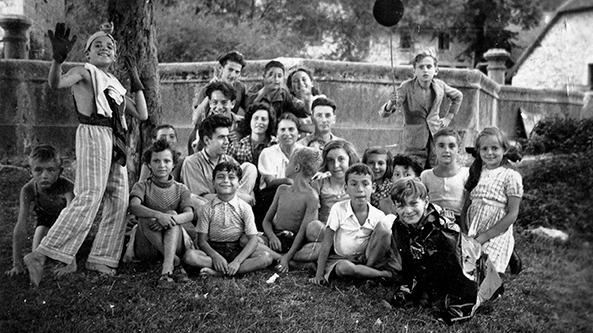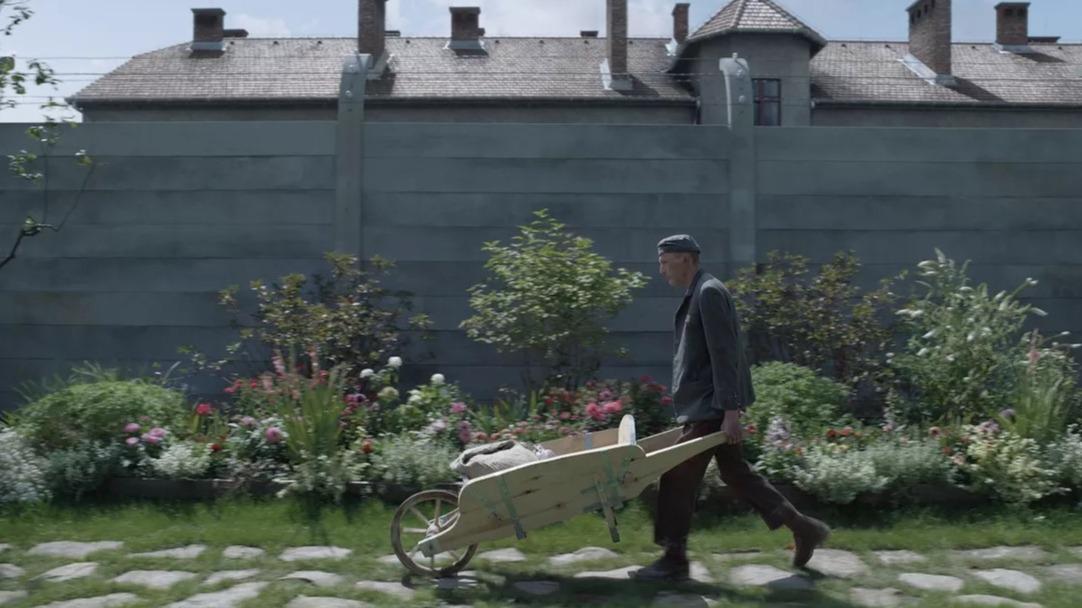On October 7, 1944, shortly after midday, SS Unterscharführer Johann Gorges arrives with about 20 armed SS men at Crematorium 4 in the Auschwitz-Birkenau extermination camp.
There live 325 inmates of the so-called Sonderkommando, a slave labor force of Greek, Polish and Hungarian Jews, who pull corpses out of the gas chambers and push them into the incinerators.
Gorges calls the prisoners to appeal to the yard, around which barbed wire pulls. One of the SS men goes through a list of prisoner numbers. The called should go to the other side of the court. Allegedly, the SS needs the forced laborers in a nearby town to clear rubble.
No one answers for multiple numbers. An SS man reaches for his pistol. Here comes the inmate Chaim Neuhof. "With the cry 'Hurray', he hit the SS man with a hammer on his head so that he was knocked down," prisoner Jehoshua Rosenblum reported later. As a result, inmates throw stones at the SS men or beat them with axes, iron bars or bare fists, as the Holocaust researchers Gideon Greif and Itamar Levin have reconstructed on the basis of eyewitness accounts and records.
Thus begins at noon on October 7, 1944, a desperate rebellion that will destroy a crematorium, save some lives and inspire many in the camp: the rebellion of the Sonderkommando in Auschwitz-Birkenau.
photo gallery
16 pictures
Uprising in Auschwitz-Birkenau: "Like a hare hunting"The survey was partly spontaneous, partly long planned. Already at the end of 1942, a few months after the SS had put into operation all four large crematoria, prisoners from the Sonderkommando contacted the resistance movement in the Auschwitz main camp, in which mainly non-Jewish political prisoners organized themselves.
It was agreed that an uprising or a mass exodus could succeed only armed. Watchtowers and barbed-wire fences ran around the individual warehouses, which the Germans electrified at night and in case of alarm. More than 3000 SS members guarded the area with trained dogs and machine guns.
Both resistance groups decided to behave calmly, to document the industrial mass murder, to bury reports and photos, or to smuggle them to the West. In addition, they wanted to arm themselves.
Black powder in the bra
The Sonderkommando prisoners collected hammers and axes from workshops in the camp, dragging knives found on corpses originally intended to cut the Sabbath bread. Since they had to break the gold teeth out of the dead, they could sometimes hide some precious metal from the SS. For this they bought through middlemen some pistols at Polish partisans who hid in the woods. A few revolvers were given to the prisoners of forced laborers who had to dismantle down Allied aircraft wrecks and found in the fractions weapons of the pilots.
The forced laborers of an ammunition factory in the camp also supplied the Sonderkommando: in small bags under their brassiere they smuggled the smallest amounts of black powder out of the production area. These powders were stuffed with nails and bits of barbed wire into tin cans, and scraps of rugs were used as fuses.
The closer the Red Army, the greater the danger
In the early summer of 1944, the Red Army quickly moved west, in June they released the extermination camp Majdanek, 300 kilometers east of Auschwitz. For the Sonderkommando, however, the advance of the Red Army meant increased mortal danger - the logistics of industrial mass murder collapsed with the German front: the fewer trains of Jews to Auschwitz, the fewer forced laborers the SS needed in the crematoria. In addition, the detainees expected the SS to eliminate all eyewitnesses of their crimes.
David Olere / Collection Yad Vashem / DPA
"Our hair, our teeth and our ashes": In 1946, artist and Auschwitz detainee David Olère captured the awful work of the Sonderkommando in this ink drawing.
The Sonderkommando urged the resistance movement of the political prisoners to finally strike. Both groups agreed on a common plan: First, the Sonderkommando prisoners should kill SS guards, put on their uniforms, lure the SS units from the watchtowers and switch off. Then the rest of the resistance should attack and break out. The plan was to attack for a Saturday in June 1944.
But the political prisoners canceled the uprising in the short term. They only expected a realistic chance of success if Soviet tanks and Polish partisans supported the revolt. "We could not attend because what was the only salvation for the inmate in Birkenau might mean suicide for the others," wrote the Austrian Communist and Auschwitz prisoner Bruno Baum later.
The Sonderkommando prisoners understood: They were on their own, they prepared their uprising alone now. "We decided that the whole plan would have been worth it if only one person could escape," prisoner Leon Cohen said later, "if we had to die then it would be better to be honored and gun in the Hand dying to be thrown honorless into the gas chamber. "
Corpse parts of the comrades in the incinerator
How threatened the Sonderkommando was became clear at the latest on 23 September: The SS separated more than two hundred prisoners, allegedly to work in the auxiliary camp Gliwice. In fact, they were taken to a disinfection room in the Auschwitz main camp and gassed. To conceal the murder, SS men burned the dead themselves.
The next day, however, the rest of the Sonderkommando found parts of their comrades in the ovens of the crematorium. At the next selection, the remaining 663 members decided they would attack. At the beginning of October, the SS ordered the Sonderkommando's foremen to keep a record of the numbers of 300 inmates who were due to clear rubble from next Sunday - apparently just a pretext for secretly killing them.
The four death factories of Birkenau were located at different locations in the camp at intervals of several hundred meters: Crematoria 2 and 3 in the southwest, Crematoria 4 and 5 in the northwest. The uprising could only succeed if it started everywhere at the same time. The prisoners agreed to strike on Saturday, October 7, at the evening roll call.
However, the SS destroyed the plan: SS Unterscharführer Gorges arrived at noon on Saturday afternoon to pick up the listed prisoners from Crematoria 4 and 5.
"Like a rabbit hunt"
And so the rebellion began with the hammer blow of the prisoner Neuhof spontaneously and uncoordinated. Many inmates had no weapons at hand. Some of them ran into the building with the gas chamber and incinerators, lit straw mattresses, set the building ablaze.
After the first surprise, the SS squad collected and fired firing back to the yard gate. A few minutes later trucks were braking in front of the yard. SS men with steel helmets, bullet-proof vests, and machine guns jumped out and shot the prisoners through the barbed roar. "One after the other, like a hare, hit the ground," remembered the prisoner Filip Müller. He himself ran to the burning crematorium and hid in a canal that connected the stoves to the chimney.
A few hundred meters to the south, the crematorium 2 detainees heard the shots, lured an SS man into the building, and threw him into an oven. Some of them ran to the barbed-wire fences, severed them with tongs and fled. On the way they cut a hole in the fence of the neighboring women's camp. They reached a barn near the camp.
There, however, the SS surrounded the inmates and opened the fire. The prisoners threw their homemade grenades. But against the machine guns of the SS, the fugitives had no chance - all were massacred.
"It was Jews who did that"
After a few hours the rebellion of the Sonderkommando had been crushed. 452 inmates and three SS men were dead. A few weeks later, the SS also hung four women from the munitions factory who had smuggled out black powder.
But the rebellion saved the lives of others. The 17-year-old Jewish woman, Bella Fleischmann, who arrived that afternoon in Birkenau and was to go to the gas chamber, took advantage of the interim confusion among the SS men and fled to another group of prisoners. Frieda Tennenbaum-Griesel, then ten years old, later reported that she and her mother were destined to be exterminated. But then the SS had driven her to another hut. "That night, the gas chamber was blown up and I think that's why we were not sent to the gas chamber."
The crematorium 4 burned down completely, both chimneys collapsed. The ruin became the symbol that resistance was possible. "In the place where millions of innocent victims were murdered, the first SS murderers fell through the vengeful hands of inmates," wrote the Jewish Auschwitz inmate and historian Israel Gutman, "and it was Jews who did that."
The Austrian resistance fighter Baum reported: "Many Poles and Germans had previously believed that Jews could not fight, and the prisoners of the Sonderkommando instructed them better, making the Sonderkommando's blood sacrifice a strong bond that strengthened international camp solidarity."
At the end of November 1944, the SS stopped the gassings and forced the Sonderkommando to demolish two of the three remaining crematoria. In the third, Sonderkommando prisoners had to continue to burn the bodies of those concentration camp inmates who destroyed the SS by malnutrition, forced labor or shots on the neck. On January 26, 1945, this crematorium was blown up to cover tracks.
One day later, the Red Army liberated Auschwitz. Of the 663 Sonderkommando men who had ventured the rebellion, about 80 survived the Holocaust.















